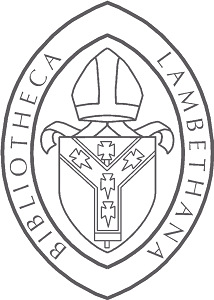A guest blog post by Dr Eyal Poleg, Queen Mary, University of London
Lambeth Palace SR2 E75 is a peculiar book. It is a copy of the first Bible to be printed in England – the ‘best of’ the Latin Vulgate, printed by Thomas Bethelet in London, July 1535. But it is not the original text that is the most interesting about this book. At first glance it appears to be a clean copy, with little to no marginal annotations and signs of reading. A more careful look reveals a hidden layer. At empty spaces at the end of prologues and sections, or at blank margins, a very thick paper was carefully pasted. This was done so professionally that previous librarians have placed the library stamp and wrote the shelf mark on this pasted paper.

Naturally, one wonders why was this paper placed, and what lies underneath. Having discussed the matter with the Library staff, a go-ahead was given to experiment with non-obtrusive ways of uncovering this. Using long exposures and a light-sheet, Steph Eeles, the Library’s resourceful photographer, was able to reveal some of the happening underneath. It revealed a mass of marginal annotations. However, as the images merged texts from both sides of the paper, they were virtually indecipherable.

Help came from an unexpected place. Dr Graham Davis from the Institute of Dentistry at Queen Mary University of London has long been developing innovative technologies and instruments for digital imagery within his discipline, as well as assisting medieval scholars and archivists (see http://apocalypto.org.uk). Seeing the images, he began developing ways of ‘subtracting’ one image from the other, thus clearing up the annotations. Two joint sessions with Graham and Steph assisted in perfecting the images.

Graham then took the time to develop a software for image subtraction, which he trialled and tested. Eventually it enabled the desired result of isolating the hidden annotations.

A full analysis of the annotations will be published in due course, but they incorporate an English table of liturgical reading, revealing the parallel use of Latin and English in the liturgy during the reign of Henry the Eighth.
